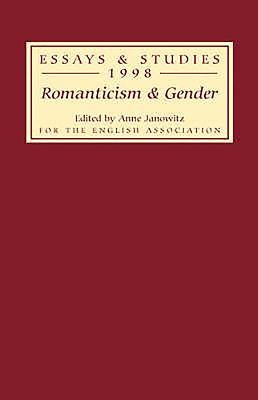
- We will send in 10–14 business days.
- Publisher: Boydell & Brewer
- ISBN-10: 0859915263
- ISBN-13: 9780859915267
- Format: 14 x 21.6 x 1.4 cm, hardcover
- Language: English
- SAVE -10% with code: EXTRA
Romanticism and Gender (e-book) (used book) | bookbook.eu
Reviews
Description
New approaches to women writers and attitudes to women in the Romantic period, principally focused on North America.
Focusing on the period from 1770 to 1830, this collection deploys recent thinking on women in the romantic period to define an agenda which will shape studies in this area into the next century. Investigating issues of class and gender, imperalism and gender identity, and gender and genre, the essays range widely over women and women's affairs during the period, and include pieces on such important writers as Emily Dickinson, Letitia Landon, and Anna Letitia Barbauld. Recent developments in the theory and practice of feminist literary criticism are used to reassess the literature of the period, and to interrogate the notion of romanticism, both as a conceptual model and as a periodbounded by dates and geographical restrictions. As a whole, the volume raises questions about gendered romanticism in America, about the surge of romantic poetics in mid-century, and about the appropriation of gendered romanticism by fin-de-siècle writers.Dr ANNE JANOWITZteaches in the Department of English and Comparative Literary Studies at the University of Warwick. Contributors: GARY KELLY, MARY FAVRET, WILLIAM KEACH, JOSEPHINE MCDONAGH, SONIA HOFKOSH, EMMA FRANCIS, DARIA DONNELLY, BRIDGET BENNETT, IRA LIVINGSTON
EXTRA 10 % discount with code: EXTRA
The promotion ends in 18d.11:17:38
The discount code is valid when purchasing from 10 €. Discounts do not stack.
- Publisher: Boydell & Brewer
- ISBN-10: 0859915263
- ISBN-13: 9780859915267
- Format: 14 x 21.6 x 1.4 cm, hardcover
- Language: English English
New approaches to women writers and attitudes to women in the Romantic period, principally focused on North America.
Focusing on the period from 1770 to 1830, this collection deploys recent thinking on women in the romantic period to define an agenda which will shape studies in this area into the next century. Investigating issues of class and gender, imperalism and gender identity, and gender and genre, the essays range widely over women and women's affairs during the period, and include pieces on such important writers as Emily Dickinson, Letitia Landon, and Anna Letitia Barbauld. Recent developments in the theory and practice of feminist literary criticism are used to reassess the literature of the period, and to interrogate the notion of romanticism, both as a conceptual model and as a periodbounded by dates and geographical restrictions. As a whole, the volume raises questions about gendered romanticism in America, about the surge of romantic poetics in mid-century, and about the appropriation of gendered romanticism by fin-de-siècle writers.Dr ANNE JANOWITZteaches in the Department of English and Comparative Literary Studies at the University of Warwick. Contributors: GARY KELLY, MARY FAVRET, WILLIAM KEACH, JOSEPHINE MCDONAGH, SONIA HOFKOSH, EMMA FRANCIS, DARIA DONNELLY, BRIDGET BENNETT, IRA LIVINGSTON


Reviews